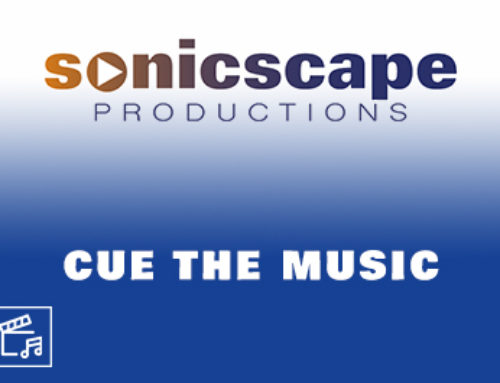You’ve just settled into your seat at the theater, warm popcorn bucket is settled onto your lap, and you find your cup holder to place your cold soda into. After a series of trailers, you finally see people start turning off their phones, not at the polite little graphics that we are all so accustomed to ignoring, but the true start of the movie… the studio logo.
This 10-20 second studio logo intro is truly the beginning of the movie and serves several roles:
- The music and visuals act as a sonic signature
- As of 2019, 76% of movies are being produced by one of five companies, and have certain expectations about each one. This sonic signature tells us, personally, what type of story we’re about to watch
- Acts as a last curtain call to settle back into your seats, turn the phones off, end conversations, and/or start focusing your attention
- In other words, it’s a subconscious play button, without it, do we know the movie is about to begin?
- Sometimes it can even be a part of the movie tonally
- I’ll talk about this with a few examples such as 20th Century Fox, Disney, and WarnerMedia
Let’s take a listen to some great and effective logo music used at some of the current and former Big Five major studios.
Cue the music…
NBCUniversal – Universal Pictures (1989-1997)
Composed by James Horner
Composed by James Horner
Universal Studios was coming off a white hot run of successes in the 1980’s that included movies like Scarface (1983), The Blues Brothers (1980), E.T. the Extra-Terrestrial (1982), The Breakfast Club (1985), and more. Universal had just celebrated its 75 year anniversary and to commemorate the occasion, a revision was made to the logo in 1989 and used until 1997. This rebranding was done to continue strengthening it’s look as it aimed to continue its run into the 1990s. Composed by the late James Horner, this sonic signature delivers the perfect amount of wonder as we sit down to escape to the film’s world.
First film to debut this logo: Back to the Future Part II (1989)
WarnerMedia – Warner Bros. Pictures (1937-1955)
Composed by Max Steiner
Composed by Max Steiner
The Warner Shield logo was (and still is) often adapted visually for each movie it accompanied. While visually, dozens of different versions exist, musically, it remained consistent. In 1937, Max Steiner composed the Warner Bros. Fanfare that would be heard ahead of the majority of feature films until 1955. It was composed in such a way that would keep the music very open at the end so it can effortlessly segue as needed to introduce the movies theme or score immediately. As an example, the intro in the video example is for Casablanca (1942), where the movie’s location would require the music to have a different feel once the Warner Bros. Pictures logo was introduced.
The fanfare would see returns in the 70’s and 80’s on a few films, and would be brought back in a synthesized form from 1985-1997 to accompany the Warner Home Video logo intro.
First film to debut this logo: Tovarich (1937)
Sony Pictures – Columbia Pictures (1992)
Composed by Johnathan Elias
Composed by Johnathan Elias
Johnathan Elias may not be a household name, but his advertising firm has given sonic signatures to many brands you know (MTV and Yahoo! to name a pair) over the past 40 years or so. In the 1990’s, he was working as a film composer and was tapped to compose the logo that would return “torch lady” as the logo in 1992. The last time she had been seen in this detail was 1976 (a smaller less detailed version was from 1977-1991). The melody of this version keeps rising as the video pans out to reveal more and more of the torch lady. Ultimately, the music “twinkles” as the image stops panning out, and reveals the Columbia Pictures name with the resolution of a very triumphant fanfare in the horns before the high winds and percussion add “twinkle” as the as entire logo fades adding a sense of wonder and magic to the movie to come.
20th Century-Fox Studios (1992)
Composed by Alfred Newman
Composed by Alfred Newman
Alfred Newman, long time music director with 20th Century-Fox Studios, composed the original theme in 1933. In 1954, he made an extended version (the version used in this example) that premiered during River of No Return (1954). After Newman’s death in 1970, the logo had been all but phased out. The logo made a return for Star Wars (1977) at the adamant request of its director, George Lucas. He loved the visuals and music so much, and understood the importance of this 10-20 second moment. Composer John Williams, would go on to make sure that the Star Wars opening music was in the same key as the 20th Century Fox logo music so that it would act as an extension of the 20th Century fanfare.
Fun Fact: This is the only former Big Five Studio on this list. 20th Century-Fox Studios was acquired by Walt Disney Studios in 2019.
Walt Disney Studios – Walt Disney Pictures (2006-2011)
Arranged by Mark Mancina
Arranged by Mark Mancina
When you think of Disney, one of the first images to come up in your mind is probably Mickey Mouse, right? After all, “it all started with a mouse.” What about musically? I’m sure a few things come up, but if I were to hum the first seven notes of Pinocchio’s “When You Wish Upon a Star?” I’d venture to say most would figure it out instantly.
“When You Wish Upon a Star” has become The Walt Disney Company sonic logo. It was used in the opening sequence of Walt Disney’s television series throughout the 50’s and 60’s, it’s used in almost every firework show and parade in the parks, it’s the horn signal for the Disney Cruise Line ships, and has been used in the Walt Disney Pictures logo.
Originally written by the late Leigh Harline and Ned Washington, Mark Mancina’s arrangement was first used in 2006 ahead of Pirates of the Caribbean: Dead Man’s Chest. This logo starts off with a dreamy twinkle, takes you through the familiar melody, and makes sure to leave enough room at the end to keep it open ended. Many different versions of this intro have been used. Disney uses different instrumentation and images in most of the intros to evoke the time and place of the movie to come to help set the viewer up.
Fun Fact: In 1940, Pinocchio’s “When you Wish Upon a Star” was the first film for Walt Disney Pictures to win the Academy Award for Best Original Song.
Pop Quiz:
Which current Big Five Major studio did I leave out?Answer:
ViacomCBS (Paramount Pictures, Nickelodeon, Miramax, etc.)



Leave A Comment